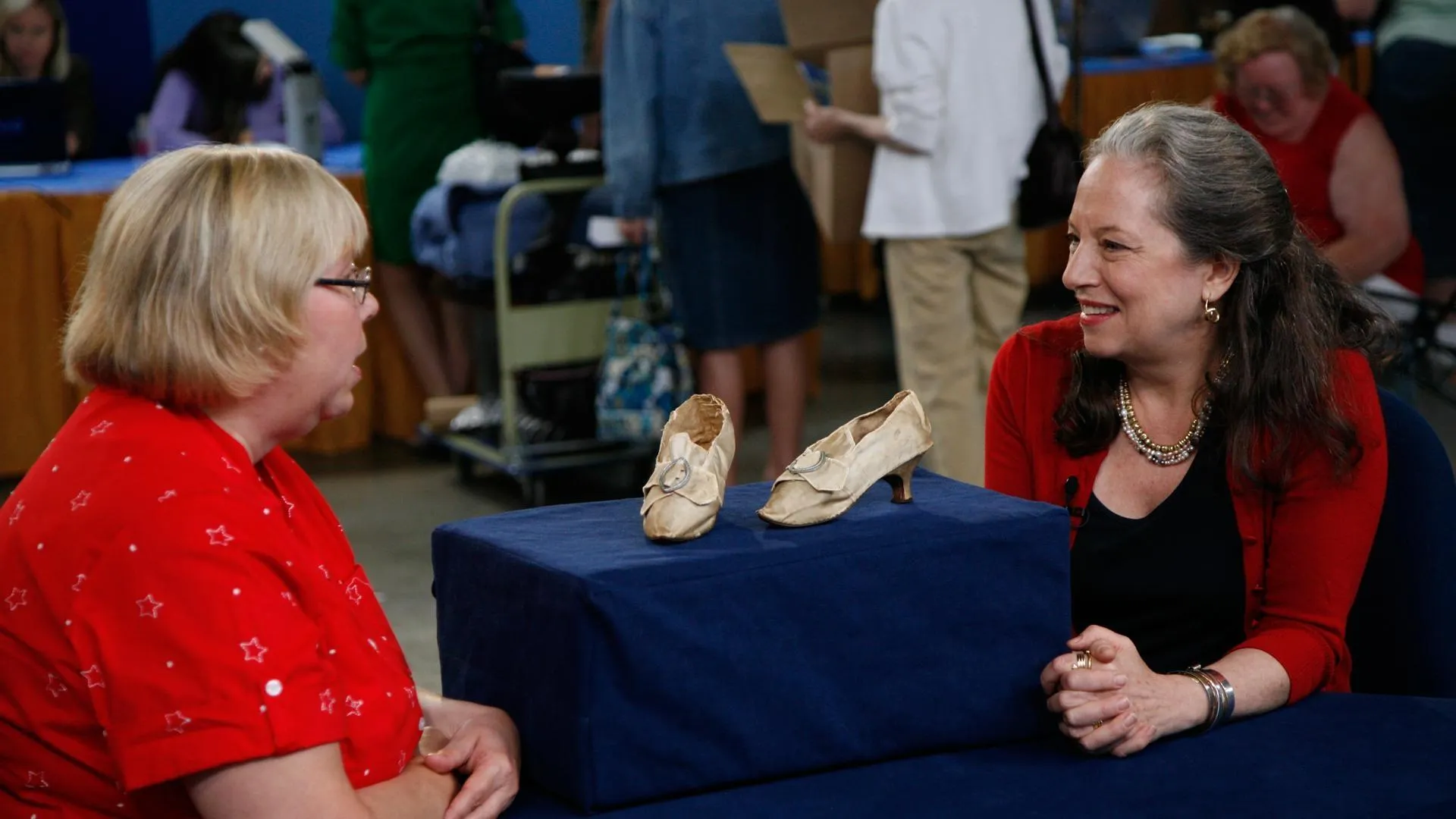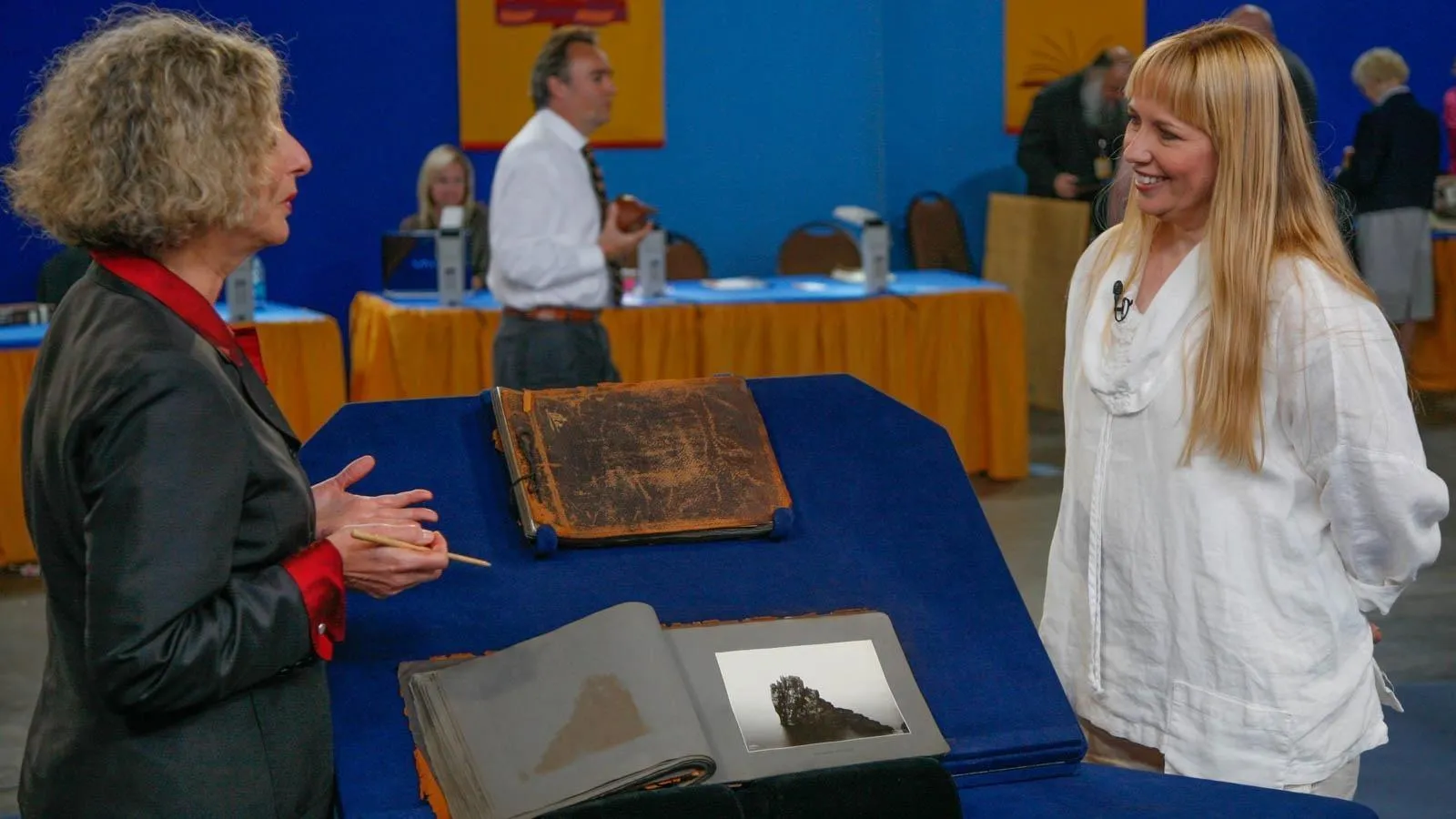GUEST: The table I know my grandmother purchased. She purchased it in Narragansett, Rhode Island, I believe, at an estate sale. That's what my mom told me. My mother was with her when she went, and they... my mom and dad were not married, so it was a long time ago.
APPRAISER: Do you know what your grandmother paid for the table?
GUEST: I have no idea.
APPRAISER: Do you have any idea as to how old it is, or where it was made, or...?
GUEST: I don't. I don't. I know that we've had it probably since the 1930s. My family has had it.
APPRAISER: Well, we'll never know precisely why your grandmother bought the table...
GUEST: No.
APPRAISER:...but she had terrific instincts, because she bought a heck of a table.
GUEST: Yeah.
APPRAISER: This is a, a beautiful table made in Philadelphia.
GUEST: Really?
APPRAISER: Probably about 1760. And it, in many ways, epitomizes what was available to a wealthy family if they knew a good cabinetmaker in the Philadelphia area.
GUEST: Wow.
APPRAISER: These tables are not particularly common.
GUEST: No, I've never seen one like it.
APPRAISER: Because they were made, um, few in number. They were labor-intensive and required exotic imported woods and also the talents of very capable carvers. This could be described generally as a Chippendale turret-top gaming table. The turret refers to this rounded corner. The knee of the beautifully shaped cabriole leg is carved with acanthus leaves. It's a popular motif in furniture of the sort of rococo period, centering a blossom. As you travel down the cabriole leg, beautifully articulated claw-and-ball feet. They've repeated the claw-and-ball feet on the back legs...
GUEST: Yes.
APPRAISER:...but the back legs are more, more simple. When you open up the table-- we'll do it just for a moment here. I mean, one might well imagine having a terrific time...
GUEST: Here, yeah.
APPRAISER: Playing cards, putting candles on the corners to light what you're doing, or tea. This table represented the center social situation in a prominent family. At some point it was refinished. This finish is fairly old.
GUEST: Uh-huh.
APPRAISER: But it definitely is not its first surface. I think another way we can regionalize this table is you look at some of the secondary wood, and in this case, the drawer bottom is cedar, the sides are tulip poplar. These are woods that are indigenous to that part of the country and commonly used in furniture made by Philadelphia cabinetmakers. And if we tip the table back a bit, the underside shows a lot of patina. Nobody refinished the underside. And, in fact, there are areas on the underside of the table where the glue blocks and you saved them--
GUEST: I saved them. (chuckles)
APPRAISER: thank goodness-- where the glue blocks have fallen off, and you see a distinct lack of oxidation.
GUEST: Is this mahogany?
APPRAISER: This is a very fine imported mahogany. So this table is, uh, in one word, um, magnificent.
GUEST: I think so.
APPRAISER: And as far as value is concerned, do you have any ideas whatsoever?
GUEST: I don't. I don't.
APPRAISER: Well, we, we talked amongst ourselves here and, uh, came up with a consensus. So the table is worth in the area of probably $250,000 to $350,000.
GUEST: (laughing): Oh, my gosh! (voice breaking): Oh, my gosh!
APPRAISER: And having said that, if it hadn't been refinished, it would be worth perhaps... well, it's a little tough to say, but maybe another $100,000 or $200,000. But the reason this table translates into as much money as that in today's market...
GUEST: Yes.
APPRAISER:...is that it's rare, it's absolutely beautiful and I'm thrilled to see it.
GUEST: (tearfully): Wow. I can't believe it. (both laugh)
APPRAISER: Well, it's true.
GUEST: I love it. It's always been in my life.









